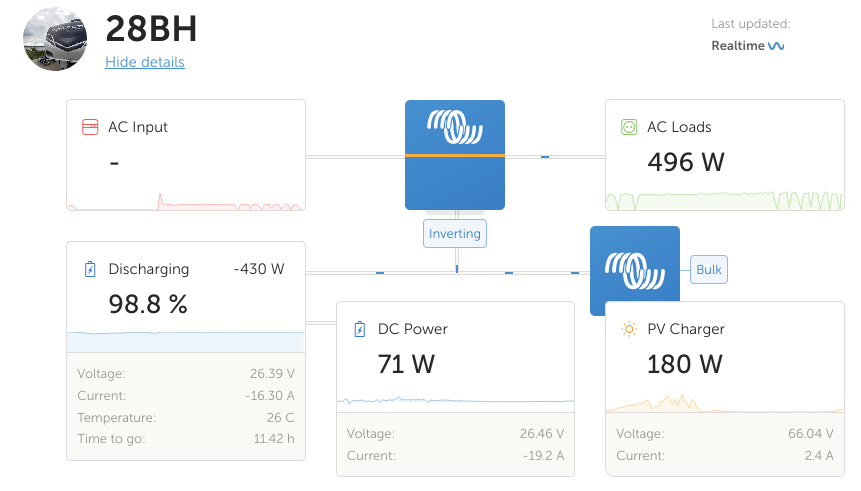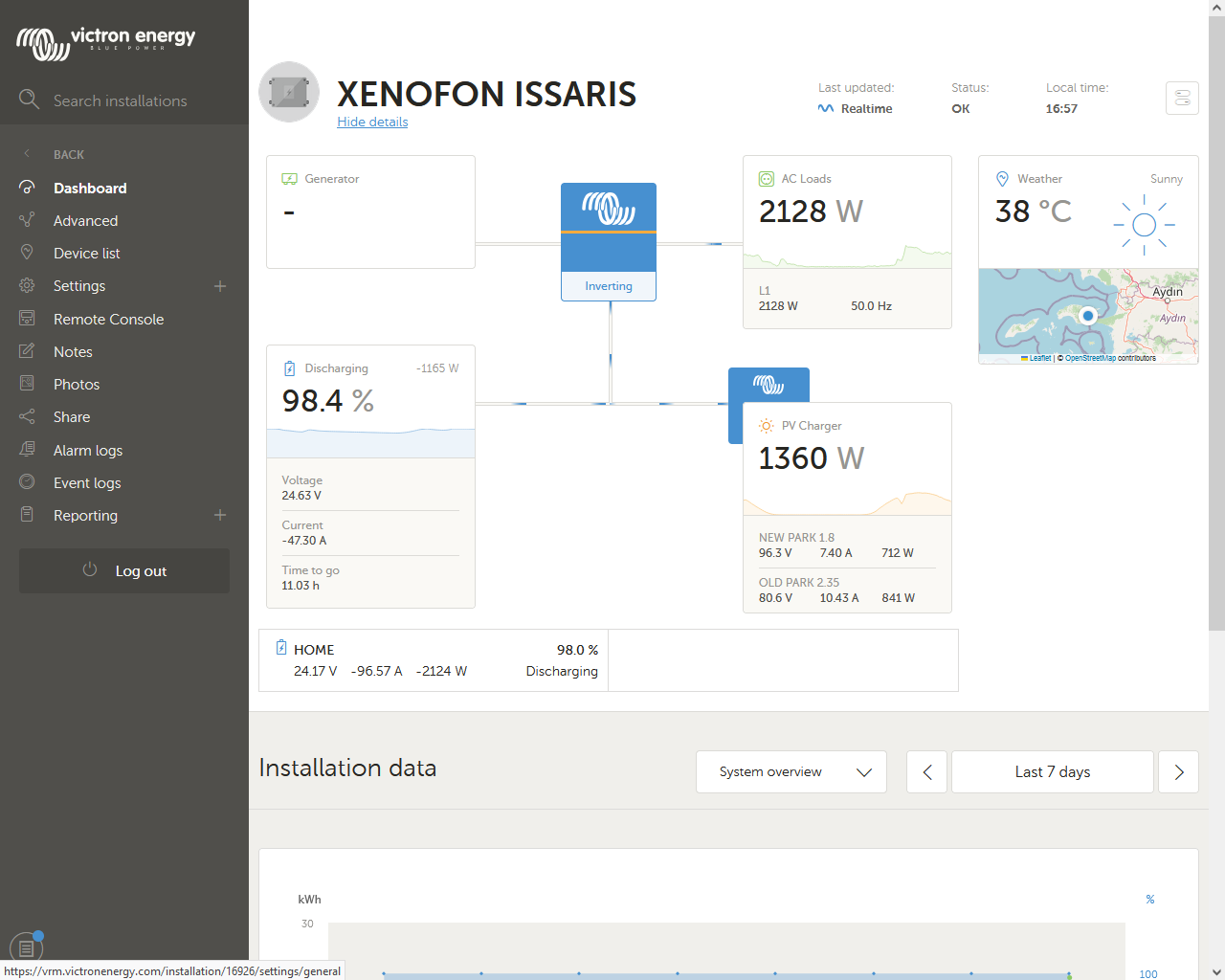I have a DC solar setup with lithium batteries and a multiplus 3000/24. Everything is working well, but when looking at VRM, part of the load is missing. That is, the numbers do not add up. My AC load is primarily resistive, with a gas absorption fridge utilizing heating elements, the wiring is proper or oversized, and the load is low enough that wiring loss is negligible. Inverter efficiency, power factor of other small loads, and charging losses might make up the difference, but it would be really nice if the VRM portal numbers came closer to adding up. It would also be nice if the Multiplus could report power factor of the AC load. These things aside, though, am I missing something on why the load numbers are so far off? 100w on a 600w load seems significant. Thanks for any insight.

Jim


 See the white line. I've enabled the range option, to show the variation which could have been reported. The white blobs are probably caused by a heater fan. The spike in the centre from an actual DC Load, so ignore that. The spike on the right though has caught me boiling the water jug and peaks at 1575W.
See the white line. I've enabled the range option, to show the variation which could have been reported. The white blobs are probably caused by a heater fan. The spike in the centre from an actual DC Load, so ignore that. The spike on the right though has caught me boiling the water jug and peaks at 1575W. 